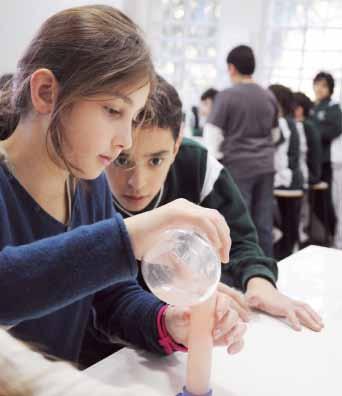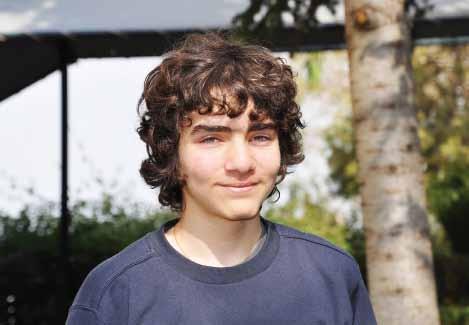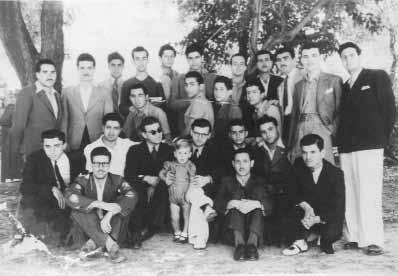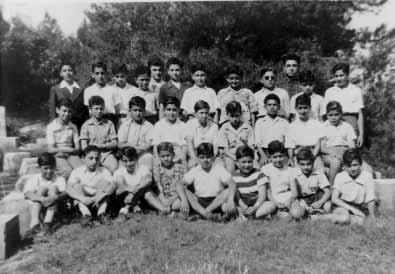
6 minute read
rooted Deep in IC Soil
Some time ago, during the World War I year of 1916, an American foreigner, window-shopping in the back street of what is now the Beirut Municipality Building, known then as the Glassware Souk or ( ز ا ز ق ل ا ق و س ) went into a shop and was welcomed by a ten-year-old boy. The American shopper struck up a conversation with the young boy and was impressed by his outspokenness and eloquence. Upon asking the owner of the shop, the boy’s father, which school he sent his son to, the American learned that it was one of the local “Sheikh” schools to which the Muslim community of Ras Beirut used to send their sons. The shopper advised the shop owner to send his son to the then-preparatory school of the Syrian Protestant College. The shop owner went by that advice, and that is how my father, Salaheddin Omar Yamout, joined the Preparatory School of the American Syrian College. I do not know what exactly the name of the school was then. It was definitely not the International College, now better known as IC. A couple of years back, I was fortunate to obtain my father’s transcript from IC (Fig. 1 below). No heading for the name of the school appears.
Salaheddin Yamout transcript Between 1919 & 1923
The interesting thing about this transcript are my father’s grades. Highest in ethics and lowest in Turkish and French. It reveals his character as a highly ethical Arab Nationalist, a family trait. Also interesting is the nomenclature for the progression of class grades. It starts from II Grade, III Grade, IF, IIF to IIIF. I guess the F stands for “Freshman,” contrary to the present meaning of Freshman as the first year of university. My father would tell me that during those days, the principal knew the names of all the students. He used to reminisce about his association with his teacher, Farid Medawar. (One of his daughters later became Mrs. Thomas Schuler.) Mr. Medawar was my father’s ideal teacher, and in addition to teaching, he used to organize a theatrical group at the school and instruct students in the fundamentals of acting. One of my father’s reminiscences involved a young boy’s prank in class. It happened during one of the daytime recesses, after the teacher and students had vacated the classroom in Bliss Hall. One of the students, who belonged to the prominent Salam family and was a brother of the late Saeb Salam, arranged with a shepherd whose sheep were grazing on campus to have his animals herded into the classroom. So imagine the reaction of the teacher when he came back to the class, opened the door to get in, and rather than find students sitting in their seats waiting for him, he was swarmed with a flock of sheep rushing to get out. One thing that strikes me about this story, though, is the presence of a shepherd with his sheep on campus. Shows how much the campus was an open place at that time. None of the security issues that plague our times. My father loved and knew by heart and used to sing to his last days the song “Stop for the Hours Are Flying.” In those days, as in ours, it used to end with “Ever live our AUB,” revealing the affiliation of IC with AUB. I have here with me, shown below, a picture of my father as a 15-year-old boy scout holding his patrol flag (dated 1921).

Salaheddin Yamout Boy Scout 1921
My father graduated in 1924 from class FIV. His grades for this class do not show in the transcript above. Below is a photo of the graduating class for that year. My father is first row second from right.

Graduating Class 1924
Notice how the students were all well attired … suits, neckties, and bowties. You have to remember these are students of what now is equivalent to Bac 1. Notice this class FIV is referred to as (ف ص ل ا ع ب ا ر ل ا م س ق ث ا د ح ل أ ا ي د ا د ع ت س إ ).
My father later joined AUB and graduated with a BA in 1930. To be able to support his studies at AUB, he went to the village of Karak in Jordan and taught in a Bedouin school for one year, mostly among the Al-Majali tribe. He had to dress as a Bedouin, as shown below, to be accepted by the Bedouin community.
Salaheddin Yamout, teacher at Bedouin School in Karak, Jordan. Circa 1927
Here is a funny story my father recounted to me that happened during his teaching year at Karak. (Reveals what happened at that time for somebody who tried to apply what he learned at IC to a remote school inside Arabia). My father wanted to organize a group of boys into a school choir to sing the Arabic national songs of that time. He auditioned his students one by one for the quality of their voices and picked those who qualified. The morning of the second day there was a lot of commotion outside around his residence. Bedouins on horses were circulating his residence in the way we see Red Indians circulate a caravan in Western movies. They were calling for “he whose name is Salah” to come out. As it turned out, my father had failed to pick the son of the tribal chief to join the choir. This was considered a big insult to the whole tribe. The only retribution was for the son of the tribal chief to join, a viable way out of this quagmire. After graduating from AUB, my father taught at IC sometime in the thirties. I do not have the date. Following the track of his beloved teacher and mentor Farid Mudawar, he again organized theatrical groups of students for extracurricular activities. The photo below shows him with other members of the faculty. Among his colleagues who should be in this picture (but I cannot identify them) were Shafic Jeha, Musa Suleiman, Atef Karam, Faiz Assaad, Ahmad Qawwaf, Alexandre Wuthier, and Emile Najjar. All were there except Ahmad Qawwaf when I joined IC in 1952. Four of them taught me. My father is front row second from left.

Members of the Faculty IC -- Circa 1935
After graduating from AUB with a BA in 1930 and joining the IC faculty in the thirties, my father married, lost his wife five years later, worked with IPC, came back to AUB for two years as a student and obtained a BScCE in engineering, then traveled to Saudi Arabia, came back to Lebanon and worked with the Ministry of Public Works as an Engineering Inspector, and passed away in 1968 at the age of 62.
It was my father who initiated me into IC, which I joined in 1952 to graduate BacII in 1958. The French teacher Monsieur Alexandre Wuthier, whom I suspect to be the tall man in the middle of the picture above, taught my father and 35 years later myself. He would always comment to me, “Yamout, your fazer was better zan you.”
Eventually, I myself was able to initiate three of my four children, Sani, Sawsan and Karim, into IC. To continue the chain, Mr. Nadi Nader, who taught me math for both Bac classes also taught my son Sani.
We are now three generations of IC and the fourth is on its way Inshallah, all thanks to the chance delving of that American foreigner, probably a teacher, at my grandfather’s glassware shop a hundred years back.
I have dwelled mainly on my father’s association with IC, not much on mine. My classmate Issam Jabara had sent in his reminisces of our days at IC (in an earlier issue). While there are many individuals around to reminisce on my period and that of my children, there are not so many to reflect on the era of the generations before.










